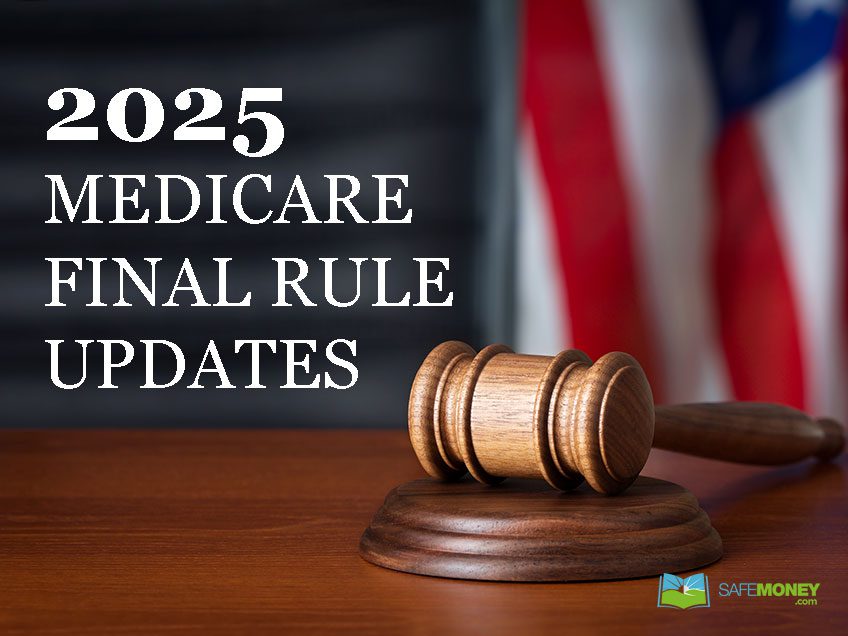
Why More Retirees Are Returning to Work and How to Navigate It
The traditional view of retirement is changing, with more retirees choosing to “unretire” and return to the workforce. Whether driven by financial necessity, personal fulfillment, or the desire for continued engagement, unretirement offers opportunities to supplement income, stay active, and find purpose. In addition to part-time jobs and consulting roles, strategies like life insurance and annuities are becoming popular tools for generating reliable income in retirement. Let’s explore why retirees are unretiring and how they can maximize their financial security with these options.
Why Are Retirees Choosing Unretirement?
1. Financial Pressures
One of the most common reasons retirees return to work is the fear of outliving their retirement savings. Rising healthcare costs, inflation, and longer life expectancies often create financial strain, even for those who planned ahead. While unretirement offers an income boost, retirees can also use life insurance and annuities to help manage their finances.
- Solution: An annuity can provide a steady stream of income that helps supplement part-time work or freelance jobs. Fixed and indexed annuities, in particular, offer stability because they can deliver guaranteed lifetime payments, which ensure retirees don’t run out of money no matter how long they live. By pairing unretirement with an annuity, retirees can balance fluctuating earnings from work with a reliable, predictable income.
2. Desire for Purpose and Engagement
Read More

The Ultimate Guide to Retirement Housing Communities: Lifestyle, Cost, and Consumer Ratings
As more seniors seek comfortable living arrangements that blend independence with care, the demand for retirement housing communities continues to rise. These communities offer more than just housing—they provide a holistic living experience, supporting the physical, mental, and social well-being of their residents. Understanding the lifestyle, cost, and consumer ratings of these communities is crucial in making an informed decision.
In this comprehensive guide, we’ll explore the nuances of life in retirement communities, breaking down the factors you should consider when choosing the right option for you or your loved one.
Lifestyle in Retirement Housing Communities
Read More

When planning for retirement, many people turn to non-qualified annuities as a way to ensure financial security. Non-qualified annuities are popular because they offer tax-deferred growth and can provide a steady income stream in retirement. However, understanding how taxation on non-qualified annuities works is crucial before investing, as it can significantly impact your overall financial strategy.
In this guide, we’ll break down what non-qualified annuities are, how they differ from qualified annuities, and how the tax rules apply when you start taking withdrawals. We’ll also discuss key factors to consider when investing in non-qualified annuities and provide a detailed look at the tax implications.
What Are Non-Qualified Annuities?
A non-qualified annuity is an insurance product that allows you to invest money that has already been taxed (after-tax dollars). The funds you contribute grow tax-deferred, meaning you won’t pay taxes on any earnings until you begin withdrawing the money. Unlike qualified annuities (such as those funded through a 401(k) or IRA), non-qualified annuities don’t come with contribution limits set by the IRS, making them a flexible option for those who want to invest more than the annual limits on tax-advantaged retirement accounts.
How Are Non-Qualified Annuities Taxed?
One of the main advantages of non-qualified annuities is the ability to let your money grow tax-deferred over time. This means you won’t pay taxes on any interest, dividends, or capital gains as they accumulate inside the annuity. However, it’s important to understand the specific tax rules on withdrawals and how they apply to non-qualified annuities. Read More

What to Do If You Lose Your Job Before Retirement: Conservative Strategies with a Focus on Income
Losing your job before reaching retirement age, particularly before age 62 when Social Security benefits become available, can be a challenging situation. However, this setback also provides an opportunity to reassess your retirement strategy and focus on generating reliable income streams rather than solely depending on accumulated assets. Here’s a comprehensive guide on managing this transition effectively, emphasizing a conservative approach that ensures income stability.
1. Reassess Your Financial Priorities: Income Over Assets
When faced with a job loss close to retirement, it’s crucial to shift your focus from merely preserving assets to generating steady income. Here’s why:
- Predictable Cash Flow: Income provides a regular stream of funds to cover essential expenses, reducing the need to deplete your savings prematurely.
- Protection Against Market Volatility: Focusing on income shields you from market downturns that could erode your savings.
- Longevity Risk Management: Ensuring a steady income stream helps protect against the risk of outliving your assets, a significant concern for many approaching retirement.
2. Identify Alternative Income Sources
Read More

Navigating Market Volatility: Safe Investment Strategies for Uncertain Times
In today’s rapidly changing economic landscape, market volatility has become a common concern for many investors. Whether driven by global events, economic data, or shifts in market sentiment, periods of uncertainty can make even the most experienced investors uneasy. However, with some thoughtful strategies, you can better prepare your portfolio to weather these turbulent times. This article provides an overview of some common strategies that are often discussed by financial experts when considering how to navigate uncertain markets.
Understanding Market Volatility
Market volatility refers to the frequency and magnitude of price changes in financial markets. While some level of volatility is normal, sharp and unpredictable movements can cause anxiety. Factors like geopolitical tensions, inflation worries, and changes in monetary policy can all contribute to increased market fluctuations. Understanding these dynamics is the first step in considering how to manage your investment strategy.
1. Diversify Your Portfolio
Diversification is a commonly recommended strategy that involves spreading investments across a variety of asset classes to help reduce exposure to any single risk. This approach is often suggested to help manage risk during volatile periods.
- Mix of Assets: A diversified portfolio might include a mix of stocks, bonds, real estate, and commodities. Stocks can offer growth potential, while bonds and other fixed-income assets can provide more stability.
Sector and Geographical Diversification: Experts often suggest diversifying not just by asset class, but also by sector (e.g., technology, healthcare) and geography (domestic vs. international) to mitigate risks associated with any single market or sector downturn.
- Consider Annuities as a Bond Alternative: Annuities can provide a predictable, guaranteed income stream, making them an appealing alternative to bonds for some retirees. Unlike government bonds, which can be subject to interest rate risks and other concerns, annuities offer a more stable income source, helping to protect against market volatility.
Read More

As the leaves begin to change and September arrives, it’s not just the weather that prompts a shift in our routines. For many, particularly those in or nearing retirement, September serves as a valuable reminder of the importance of planning and preparedness. In the United States, September is recognized as National Preparedness Month, an initiative that encourages all of us to prepare for the unexpected. For retirees or those approaching retirement, this preparation goes beyond emergency kits and evacuation plans; it includes a critical focus on financial readiness. One effective way to bolster your financial security is by participating in a savings challenge.
Why Financial Preparedness is Crucial in Retirement
As we age, the financial landscape changes significantly. The sources of income may become fixed, healthcare costs can rise, and unforeseen expenses—like home repairs or medical emergencies—can place a substantial strain on savings. This makes financial preparedness especially crucial for older adults. Having a well-thought-out financial plan, including a robust emergency fund, can help ensure peace of mind and stability in your retirement years.
A savings challenge is a practical strategy to strengthen your financial safety net. By setting clear, achievable goals and following a structured savings plan, you can build a buffer that helps protect against unexpected financial shocks.
What is a Savings Challenge?
A savings challenge is a strategic approach to saving money over a set period, such as a month or a year. It involves committing to regular contributions to a savings account, whether daily, weekly, or monthly. For retirees, a savings challenge is not just about accumulating wealth but about enhancing financial resilience. It encourages disciplined saving and mindful spending—two habits that are essential for managing finances during retirement.
Engaging in a savings challenge this September can provide a renewed focus on financial preparedness, particularly as it relates to maintaining a comfortable and secure retirement. Read More

In 2025, Medicare will implement significant changes designed to enhance healthcare access and affordability. These updates aim to benefit beneficiaries, especially those with high prescription drug costs and chronic conditions. Stay informed to maximize your Medicare benefits and ensure you are prepared for the upcoming changes.
Significant Medicare Changes in 2025: What Beneficiaries Need to Know
As Medicare continues to evolve, the year 2025 will introduce several significant changes aimed at improving healthcare access and affordability for its beneficiaries. These changes are set to bring about considerable benefits, especially for those with high prescription drug costs and chronic conditions. Here’s an in-depth look at the key updates coming to Medicare in 2025.
1. Out-of-Pocket Spending Cap for Prescription Drugs
Read More

Is Replacing Your Annuity a Good Idea? Evaluating New Annuity Rates and Benefits
As an annuity owner, you’ve likely invested in this financial product to secure a steady income stream during retirement. Annuities offer various benefits, such as guaranteed income, tax-deferred growth, and a range of investment options. However, as financial markets evolve, newer annuities with updated features, benefits, and potentially better annuity rates become available. If you’re tempted to replace your existing annuity with a newer one offering seemingly better annuity rates, it’s essential to weigh both the potential advantages and the risks involved.
This article will help you understand the pros and cons of replacing your annuity based on current annuity rates, allowing you to make an informed decision that aligns with your financial goals.
Why Consider Replacing Your Annuity? The Appeal of Better Annuity Rates
- Higher Annuity Rates: One of the most compelling reasons to consider replacing your annuity is the opportunity to secure better annuity rates. If your current annuity was purchased when interest rates were low, you might find that newer products offer more attractive fixed or variable rates, potentially providing a higher income in retirement.
- Improved Market Participation: Some new annuities, such as fixed indexed annuities (FIAs), offer a combination of better annuity rates and market-linked growth potential. If your current annuity does not participate in market gains or offers limited returns, switching to an annuity with better rates and market participation could increase your investment’s overall performance.
- Enhanced Income Riders with Better Rates: Many newer annuities come with enhanced income riders that offer better annuity rates on lifetime income. These riders can provide more robust withdrawal options or higher guaranteed income for life, which can be particularly beneficial if you need greater financial flexibility or a higher income in retirement.
- Updated Features for Longevity and Healthcare: With people living longer, some newer annuities offer riders for long-term care or chronic illness, providing additional coverage. If your current annuity lacks these benefits, switching to a newer product with competitive annuity rates could offer both better income and greater peace of mind.
- More Favorable Surrender Terms and Rates: If your existing annuity has a long surrender period or high surrender charges, replacing it with an annuity offering more favorable terms and better annuity rates could provide greater financial flexibility and increased potential returns.
The Potential Drawbacks of Replacing Your Annuity for Better Annuity Rates
Read More

👤Authored by Terry Coleman, a financial expert with extensive experience in retirement planning and annuities. Discover more about my background and expertise here.
Retirement planning is like managing a farming operation—it requires careful consideration, strategy, and a good understanding of the market dynamics. Just as a farmer decides when to buy or sell cattle based on market conditions, investors must determine the best strategies to protect and grow their retirement savings. Annuities are a crucial tool in this regard, providing guaranteed income and mitigating risks like inflation, taxes, long-term care costs, and market volatility. But with various types of annuities available, deciding which is right for you can be overwhelming. This article will explore different types of annuities and why they might be the best fit for your retirement needs, focusing on guaranteed growth, zero market risk, life income, and legacy planning.
Understanding the Basics: What is an Annuity?
An annuity is a financial product that provides a steady stream of income, typically during retirement. It involves a contract with an insurance company where you pay a lump sum or series of payments in exchange for periodic payments that can last for a specific number of years or the rest of your life. The primary appeal of annuities is the promise of a guaranteed income, which can help you navigate financial uncertainties like inflation, taxes, and long-term care costs.
The Accumulation Phase: Setting the Stage for Retirement
Think of the accumulation phase as the period when a farmer invests in his herd, buying cows when prices are low and selling when they are high. During this phase, which usually spans most of your working years, you can afford to take some risks to grow your savings. However, as you approach retirement—typically three to five years out—it’s crucial to shift your focus from high-risk, high-reward investments to more moderate or conservative assets. This transition is akin to the farmer deciding to hold onto his herd and invest in their upkeep when beef prices drop.
This is where annuities come into play, particularly fixed annuities and indexed annuities. Fixed annuities offer a predictable, guaranteed return, shielding your investment from market volatility—a vital feature for those nearing retirement who can’t afford to lose their hard-earned savings. Indexed annuities, on the other hand, provide a balance between risk and reward by linking returns to a market index like the S&P 500. This allows for some growth potential while still offering zero market risk—your principal investment is protected even if the market takes a downturn. Read More

If you have just turned 65, then you might be eligible to enroll in Medicare. Medicare is a health insurance program offered by the federal government to retirees and others who qualify.
There are many options for health coverage with Medicare. It’s good to understand a little bit about these options, as they may be confusing, or at least at first.
To help you get started, here are some basic questions that you probably have about Medicare – and what different things can entail.
Read More


















